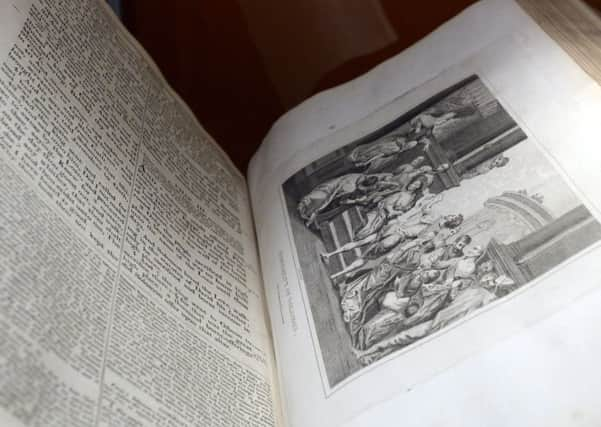Alnwick, History Society


Mr Dickinson grew up in a household full of books, and first became acquainted with the craft of book-binding when he was at school, where a restorer working there showed the rudiments to a handful of interested boys. Later, when his children were small, he took up book restoration to supplement the family income.
The earliest books were papyrus scrolls, but following a trade war with Egypt, parchment, made from animal skins, was introduced. Paper made its way from China slowly and did not catch on here till the 15th century.
Advertisement
Hide AdAdvertisement
Hide AdMr Dickinson had brought a lot of his equipment, and described how a book was made. Four sheets of parchment were folded in half and sewn together along a chord of linen thread in a frame. These were painted with animal glue for strength. The books were then covered back and front with ‘boards’, milled up fibres, and the whole pressed together. Finally, the book was covered to provide an attractive finish.
The earliest coverings were leather, mainly goat’s skin, which was strong, pliable and took dyes well, as well as having an attractive grain. Calf skin became popular in the late 18th and 19th centuries as it was smooth and thin, ideal for gold tooling. The cheapest skin was sheep, but this is not very durable. It seems to have been the preferred choice of the church, and many family bibles have been poorly covered.
In the 17th century, bindings such as velvet, engraved and embossed leather, and vellum were introduced. Later, marbled paper covers appeared. These had spines and corners of leather, and were much cheaper to produce. Canvas and other cloth was introduced in the 19th century. The first attempt at a paperback was in the 1820s. All of these will have fallen apart by now as they require the properties of PVA glue to hold together.
Finally, David showed us how gold-tooling is done. Altogether, it was a fascinating evening.
Advertisement
Hide AdAdvertisement
Hide AdThe next meeting is on March 28, at 7pm (note earlier time), at Bailiffgate Museum. Doors open at 6.30pm. Dr Ian Roberts will talk about Agriculture In Wooler And Its Environs, 1800 To The Present Day.